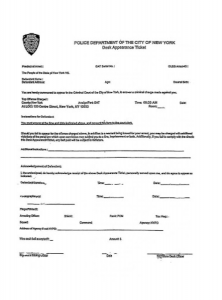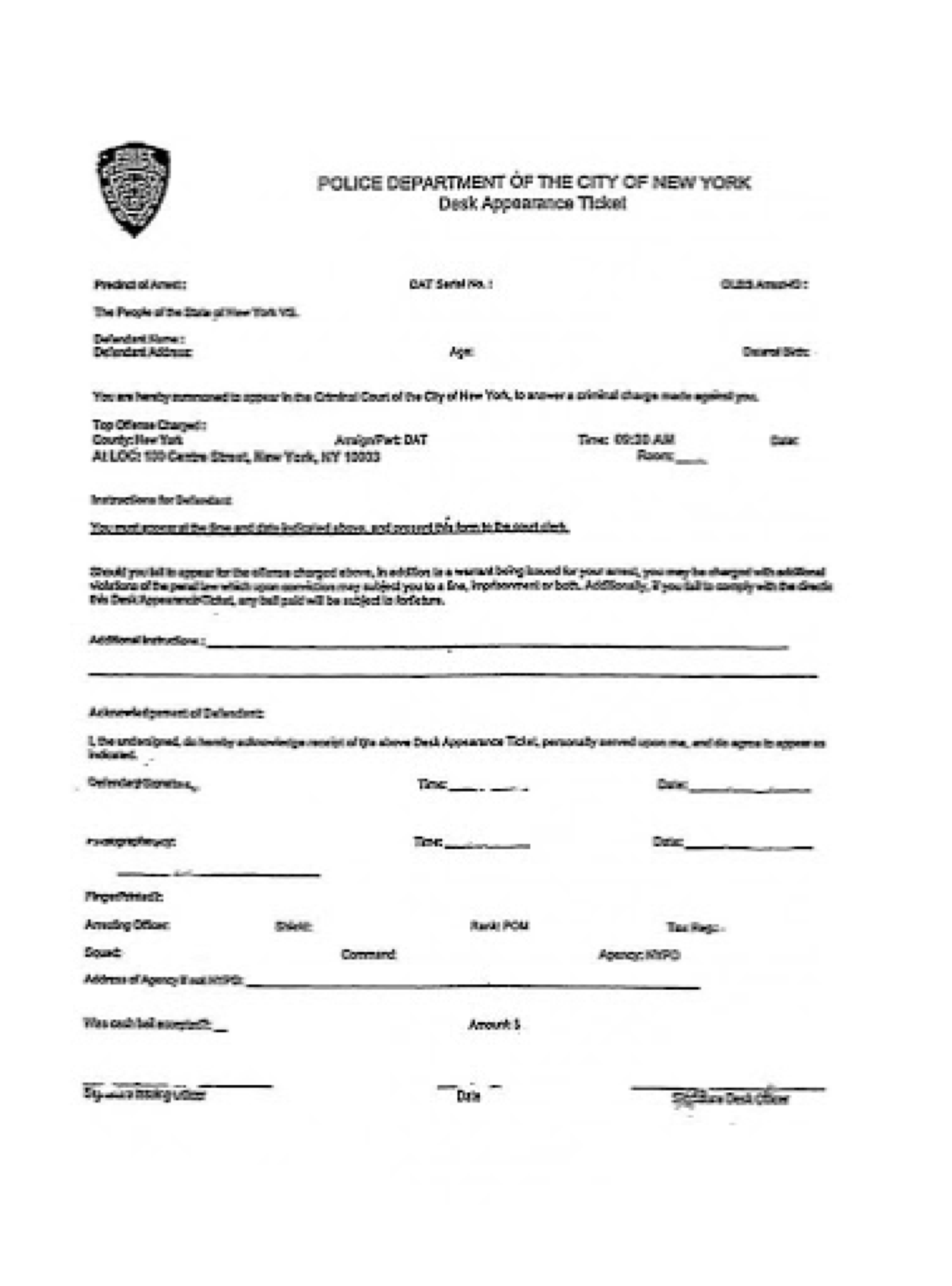New York Criminal Justice Reform: The DAT / Desk Appearance Ticket
When a person is arrested in New York, he or she is either issued a Desk Appearance Ticket, which is called a DAT, or held in custody and brought before a judge within about 24 hours.
A Desk Appearance Ticket is a form with instructions for appearing in court for on a future date for arraignment, which is the first appearance before a judge. Typically, the scheduled arraignment date, or DAT date, will be 6 to 12 weeks after the date of the arrest. As of January 1, 2020, police in New York must issue a DAT when:
- The alleged crime is a classified as a misdemeanor or class E felony; and
- The person being arrested has valid, government-issued identification.
Some crimes for which DATs are frequently issued include:
- Petit Larceny or Grand Larceny
- Assault (except allegations of Domestic Violence or where an Order of Protection will be issued)
- Criminal Possession of a Controlled Substance
- Criminal Possession of a Weapon
- Criminal Possession of Stolen Property
A DAT issued by police contains basic information, such as:
- Your name
- Date and time of arraignment
- Address of the court and the court name or part
- The criminal charge or charges on the arrest report
In New York, police will not issue a Desk Appearance Ticket for:
- Any crime that is class A, B, C or D felony
- Any alleged Sexual Assault or Sex Crime
- An allegation involving Domestic Violence
- An allegation where an Order of Protection will be issued
In addition, a DAT probably will not be issued if a person has an outstanding warrant. In short, if you are arrested for a crime that is eligible for a DAT, you have government-issued identification and there isn’t an outstanding warrant, you are likely to be issued a DAT at a police precinct and then released within a few hours.

DAT issued by the NYPD.
When you receive a Desk Appearance Ticket, you are required to appear in court on the designated date. If you fail to appear at the DAT date, a bench warrant will be issued for your arrest. If a bench warrant has been issued for your arrest and then when come into contact with police, it is likely that you will be arrested and brought before the court. That means even if you are stopped for even a traffic ticket, if you have an open warrant related to a DAT, you are likely to be arrested by police and brought before a judge to address the warrant. If you have been issued a DAT and have a very good reason that you truly cannot appear in court on the DAT date, you should contact a criminal defense attorney as far in advance as possible because your attorney may be able to arrange to have your arraignment adjourned without a warrant being issued.
The purpose of the Desk Appearance Ticket court date is the arraignment. However, it is often possible to resolve the charges at this first court appearance. One possible resolution at the arraignment is an Adjournment in Contemplation of Dismissal, or ACD. If you are offered and accept an ACD the case will be automatically dismissed and sealed in either 6 or 12 months, depending on the charged crime. Some common ACD terms include:
- Staying out of trouble/not being arrested during the adjournment period
- Completing community service or a program
- Obeying an Order of Protection
- Making restitution to a complaining witness
Another common resolution where the charge is minor and the defendant has no criminal history or only a minor prior conviction is a plea bargain to Disorderly Conduct, which may include some of the above terms. In New York, Disorderly Conduct is a violation—and not a crime –and does not result in a criminal record.
If the case is not resolved on the DAT date, the judge will set another date to appear in Court. Depending upon the nature of the charges and the likelihood of resolution with the prosecutor, the type of appearance on the next court date may differ. Some possibilities include:
- Presentation of evidence from a victim or civilian witness
- Filing of a supporting deposition from police or a civilian witness
- Presentation of evidence from a victim or civilian witness
- Discovery (information and evidence about the case given to the defense by the prosecutor)
- Motion practice (resolution of issues related to admissibility of evidence or facial sufficiency of an accusatory instrument)
- Hearing and Trial
The next court date will typically take place 6 to 12 weeks after the DAT date. If you appeared without an attorney on the DAT date and have been given a new court date, it is a good idea to make contact with a criminal defense lawyer as soon as possible. Your attorney will need time to prepare for the next appearance, and you may lose the opportunity to obtain evidence and to pursue certain defenses if you don’t act promptly.





